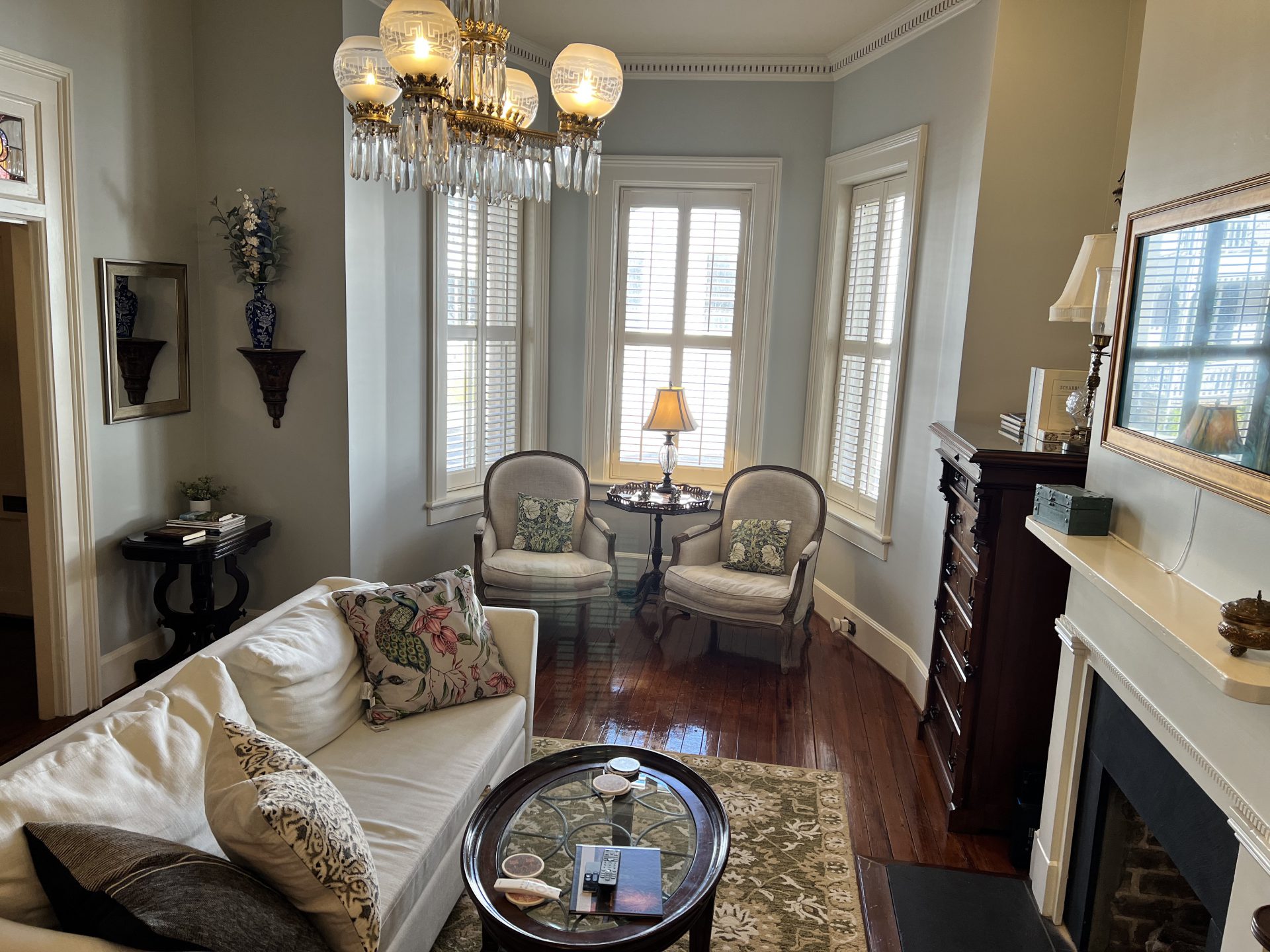Beauty in the kitchen
I wanted to add color to the kitchen of the Broughton Street House but what I found was a history lesson. While searching for patterns and colors that would fit our Victorian house I learned about the founder of a design movement. William Morris patterns bring beautiful colors to everyday items. We’ll be using them throughout Broughton Street House.
In the middle of the 19th century, Britain changed. Industrialization reshaped the economy and created new wealth and new manufacturing capacity. Victorian households used their affluence to fill their homes to impress visitors and display their status. Furniture, textiles, and fabrics became ornate, cheaply made, and widely available.
In 1851, in Hyde Park of London, Prince Albert hosted “The Great Exhibition“. His goal was to showcase what is now called “High Victorian” wares and to champion the virtues of the English economy. This exhibit was a powerhouse display of the industrial design capabilities of the era. Famous figures such as Queen Victoria
, Karl Marx, Charles Darwin, Lewis Carrol, and Charlotte Bronte came to the Hyde Park to see the goods and be seen by the people. In fact, over six million people attended the exhibit.While the Exhibition was popular, there was a group of disaffected but well-to-do thinkers that criticized the event. Richard Redgrave, John Ruskin, and William Morris saw the displays as cheap, ostentatious, and dependent on industrialization instead of craftsmanship.
William Morris Takes a Stand for Beauty
William Morris and his lifelong friend Edward Burne-Jones established a counter-culture school of thought after the exhibit. They based their movement on nostalgia for the medieval period and a desire to restore the beauty of hands-on craft. Morris tried architecture, fine art, and publishing but never achieved major success in those fields. However, he expanded his circle of influential friends and fellow travelers and shared his ideas. The “Arts & Crafts” was founded with a mission to bring the beauty of craftmanship to the people of England. Ultimately, William Morris saw his opportunity to begin producing textiles and fabrics that reflected his ideas. This is where he made his mark.
William Morris’ Red House is today considered a British national treasure for its design and décor. His summer cottage Kelmscott Manor is a much older design, but he drew inspiration from its medieval beauty.
More than Beautiful
Arts & Crafts is about more than design; it is about fitting design into a context of social constructs and division of labor in a beautiful way. Most of the proponents of Arts & Crafts were wealthy, educated, and socialist. They believed with proper design they could entice British consumers to make different choices. In their vision, everyone would place more value on handcrafted, beautiful, wares built in small shops reflecting the individuality of the craftsmen. But in reality, only the wealthy could afford the high quality wares that emerged from this movement. Although a few practitioners of the Arts & Craft movement collaborated with manufacturers to make these goods available to a broader audience, most of the practitioners shunned commercialization and the movement faded from popular design in Britain.
In the United States, the movement took a different turn. Americans scaled the ideas to the mass market: Tiffany, Stickley, “Mission” style furniture, and “Craftsman” architecture all emerged from the designs and themes William Morris introduced.
Introducing William Morris to the Broughton Street House
The Broughton Street House is a popular vacation rental with Victorian décor and antique furniture, so we want to introduce new color in a way consistent with the period of the house. Thankfully, beautiful prints by William Morris are a great place to start.
The William Morris Society sells fabrics and wallpapers using the patterns, and the proceeds go to support the Society. Also, Wallpaper Direct carries a huge line of beautiful William Morris wallpapers, including some exclusive colors.
Additionally, Many of William Morris’ original designs are now in the public domain, so there are lots of options for displaying some of these amazing patterns.
Prints from Art.com, Patterns by William Morris
We ordered a selection of beautiful William Morris prints from art.com. First, the colors add excitement to the earth tones of the kitchen, and draw the eye upward to make full visual use of that high ceiling. Second, we can also repeat these period colors and patterns in other elements (like countertop appliances and kitchen tools and throughout the house) to brighten up the space.
Here you see two of these prints in our kitchen. We added these to fill the blank spaces above the cabinets since the ceiling is so incredibly high in this kitchen.
We’ve also used William Morris patterns for some of the cushions around the house.
We have placed William Morris place mats in the kitchen, William Morris hand towels near the oven, and even a deck of cards in the living room with William Morris patterns on the backs of the cards. We’ll continue to look for opportunities to incorporate William Morris’ designs and patterns into the Broughton Street House where appropriate. I’d love to find a place to use Morris and Company Wallpaper at some point, but we’re not ready for that right now. It’s peak season.


One Reply to “William Morris Patterns”